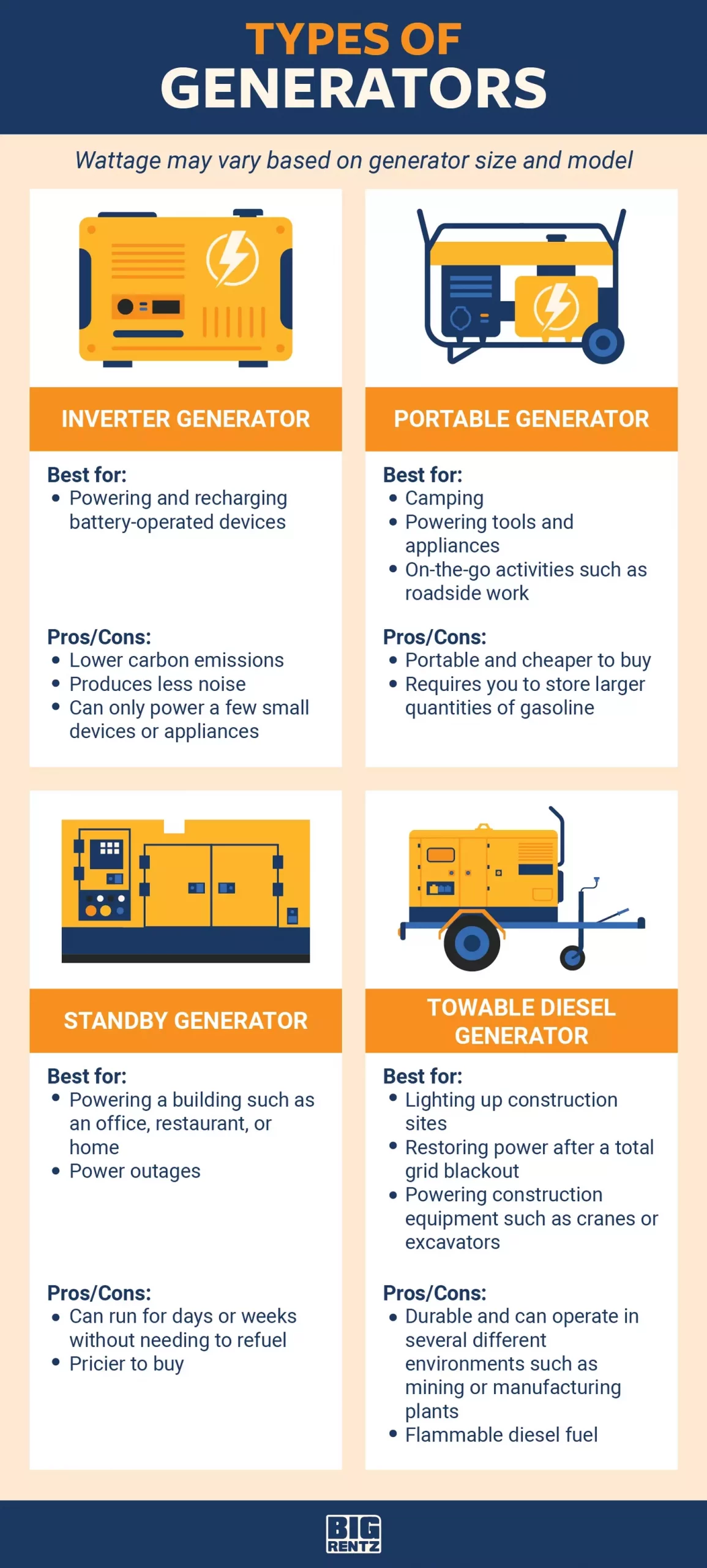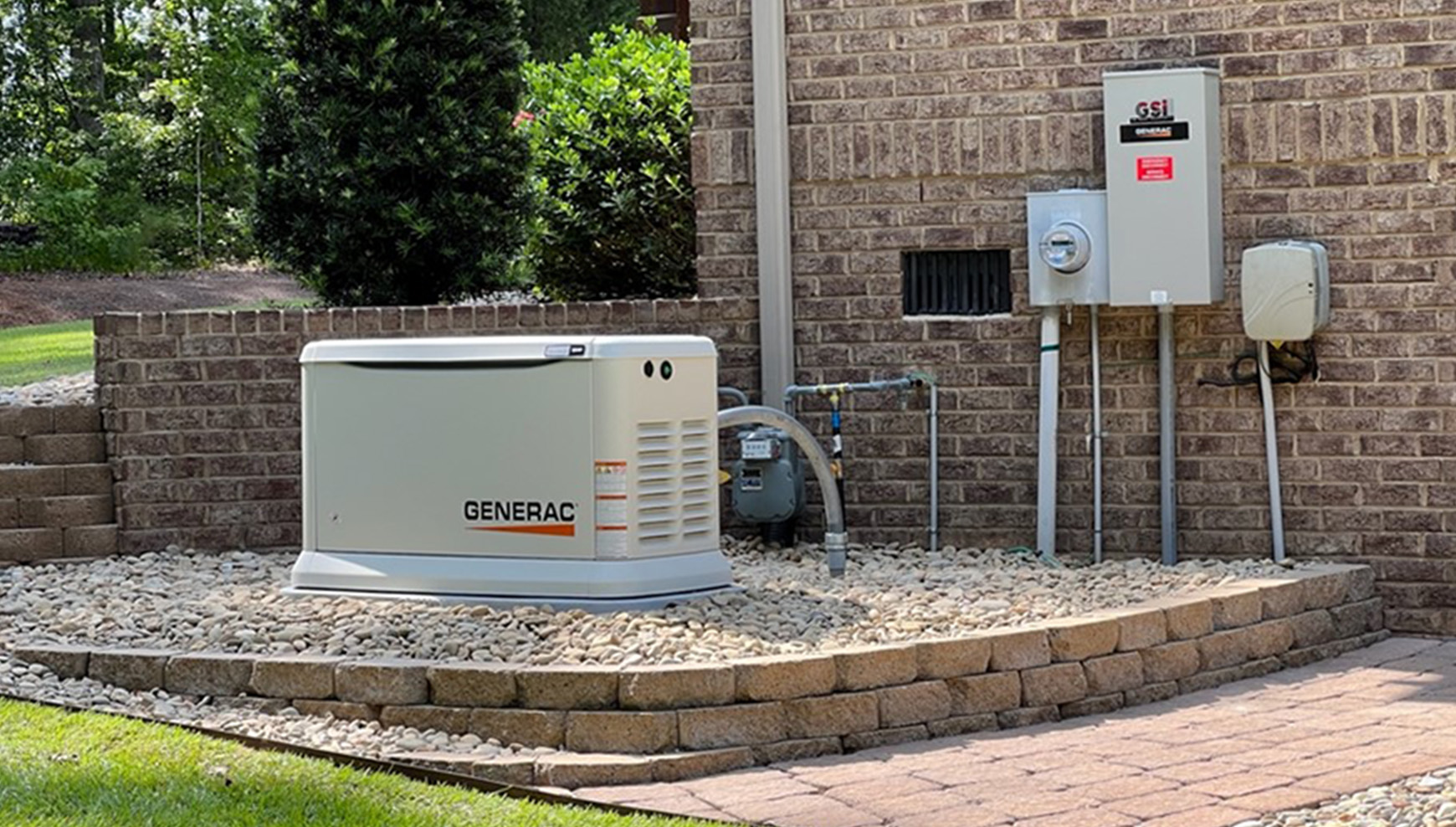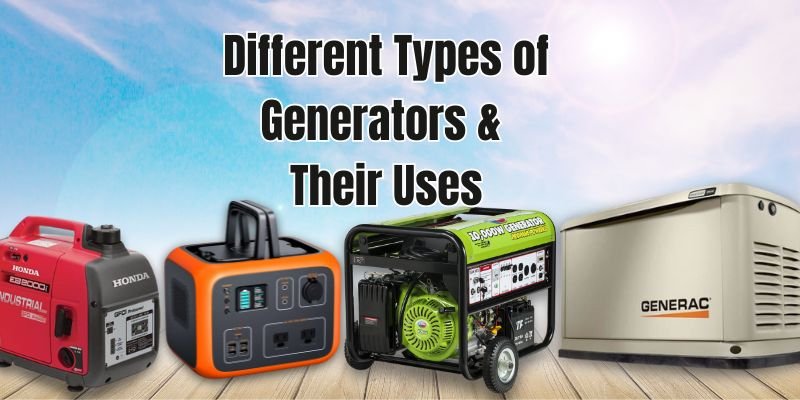Disclosure: This post contains affiliate links and I will be compensated if you make a purchase after clicking through my links. Learn More
Choosing the right generator for a construction site is crucial. It ensures smooth operations and safety.
Construction sites need reliable power. From running heavy machinery to powering tools, a generator is vital. But not all generators are the same. The size of the generator depends on the equipment used and the site’s needs. This guide will help you understand what size generator you need for your construction site.
We will explore factors like power requirements, types of generators, and tips for making the best choice. By the end, you will know how to select the perfect generator to keep your construction project running smoothly. Let’s dive in.
Choosing The Right Generator
Choosing the right generator for your construction site is vital. It ensures your tools and equipment run smoothly. Without the right power, work can slow down. This can lead to delays and extra costs. Let’s dive into how to choose the right generator.
Assessing Power Needs
First, assess your power needs. Make a list of all equipment that will use the generator. Include power tools, lights, and other machinery. Check each item’s wattage. Add them up to get the total wattage required. This gives you a clear idea of the power you need.
Also, consider the starting wattage. Some tools need extra power to start. Look for this information on the equipment or in the manual. Add this to your total wattage. This ensures the generator can handle peak power demands.
Understanding Generator Types
Next, understand the different types of generators. Portable generators are common on construction sites. They are easy to move and set up. They provide enough power for small to medium sites.
Standby generators are another option. They are fixed in one place and offer more power. They are ideal for large sites with high power needs. Diesel generators are also popular. They are durable and fuel-efficient. They can run for long periods without refueling.
Choosing the right type depends on your site’s power needs and size. Assess these factors carefully. The right generator will ensure a smooth and efficient workflow.
Power Requirements For Construction Tools
Understanding the power requirements for construction tools is crucial for selecting the right generator. Different tools and machinery used on construction sites have varying power needs. This section breaks down the power needs of handheld tools and heavy machinery.
Handheld Tools
Handheld tools such as drills, saws, and grinders typically require less power. These tools usually need between 500 to 2,000 watts. Check each tool’s power rating before use. A small generator, around 3,000 to 4,000 watts, can handle multiple handheld tools. This ensures efficient and uninterrupted work.
Heavy Machinery
Heavy machinery like concrete mixers, compressors, and welders demand more power. These machines often need 2,000 to 10,000 watts or more. Calculate the total power requirement before choosing a generator. A larger generator, around 10,000 to 20,000 watts, is suitable for heavy machinery. This ensures all equipment operates smoothly without power interruptions.
Calculating Total Power Consumption
When planning a construction site, choosing the right generator is crucial. You need to ensure it meets all power requirements without overloading. Calculating the total power consumption helps you determine the appropriate generator size for your needs. Below, we’ll break down the process into easy-to-follow steps.
Wattage Calculation
Start by listing all the equipment you’ll use on the site. Each tool has a specific wattage requirement. For example, a circular saw may need 1400 watts, while a concrete mixer could require 550 watts.
Sum up the wattage of each tool to get a total. This gives you a baseline for your generator’s capacity. You can find wattage information on the equipment’s label or manual. If you can’t find it, check online or consult the manufacturer.
Remember to include smaller tools and devices. These may seem insignificant but can add up. Consider adding a buffer to your total wattage to account for future needs.
Peak Load Considerations
Some tools draw more power when they start up. This is known as the peak load. For instance, a compressor may need 3000 watts to start but only 1500 watts to run.
Calculate the peak load for your equipment. Add this to your total wattage to ensure your generator can handle these surges. This prevents overloading and potential damage to your tools.
Think about the sequence in which tools will be used. If multiple high-load tools start simultaneously, it can strain your generator. Plan the usage to spread out peak loads effectively.
Are you ready to calculate the total power consumption for your construction site? What challenges have you faced in selecting the right generator size? Share your thoughts and tips with us!

Credit: tomahawk-power.com
Fuel Types And Efficiency
Choosing the right generator for your construction site involves several factors. One key consideration is the fuel type and its efficiency. Different generators use different fuels, which affects their performance, running cost, and environmental impact. Understanding these differences can help you make an informed choice.
Diesel Generators
Diesel generators are popular on construction sites. They are known for their durability and efficiency. Diesel engines often run longer and use less fuel compared to other types. This can lead to lower operational costs. They also handle heavy loads well, making them ideal for large projects.
Diesel fuel is less flammable than gasoline. This adds a layer of safety on busy construction sites. Diesel generators are also easier to maintain. They have fewer components that wear out quickly. This means less downtime and more productivity.
Gasoline Generators
Gasoline generators are another option. These generators are usually smaller and lighter. This makes them easier to move around a construction site. They are often less expensive upfront. This can be a good choice for smaller projects or short-term use.
However, gasoline generators may not be as fuel-efficient as diesel generators. They also produce more emissions. This can be a concern for environmentally-conscious projects. Gasoline is highly flammable, so extra care is needed for storage and handling.
Portability Vs. Stationary Generators
Choosing the right size generator for a construction site is crucial. Portable generators offer flexibility and ease of movement. Stationary generators provide consistent power for larger projects.
When deciding on the right generator for your construction site, one key consideration is whether you need a portable or stationary generator. This choice impacts everything from ease of use to efficiency on the job.Portable Options
Portable generators are ideal for sites where flexibility is crucial. Imagine moving from one part of the site to another without hassle. They are compact and easy to transport. You can take them wherever power is needed. These generators are perfect for smaller projects or temporary setups. They offer the convenience of mobility, ensuring you always have power where you need it.Stationary Solutions
Stationary generators, on the other hand, are built for stability and long-term use. If your site requires constant power, this is your go-to option. They are larger and more powerful than portable units. This makes them suitable for heavy-duty tasks. Stationary generators are often used in large construction sites. They provide a reliable source of power, ensuring your equipment runs smoothly. When choosing between these options, consider the scope of your project. Do you need flexibility or stability? Your choice will directly impact your efficiency and productivity on the construction site. So, which one fits your needs best?Generator Safety Tips
Choosing the right size generator for a construction site ensures safety and efficiency. Consider the power needs of tools and equipment. Calculate the wattage to avoid overloads and potential hazards.
When working on a construction site, having the right generator is essential. But safety should always be a priority. Here are some practical and actionable generator safety tips to ensure your construction site runs smoothly and safely.Proper Ventilation
A generator produces carbon monoxide, a deadly gas. Always operate your generator in a well-ventilated area. Never run it indoors or in partially enclosed spaces like garages or tents. Keep it at least 20 feet away from your work area. Ensure the exhaust is pointed away from any occupied spaces. This simple step can save lives.Regular Maintenance
Routine maintenance keeps your generator running efficiently. Check the oil levels and replace the oil filter regularly. Inspect the fuel system for leaks and ensure the air filter is clean. A well-maintained generator is less likely to fail when you need it most. Create a maintenance schedule and stick to it. This helps you remember when tasks need to be done. Safety should never be an afterthought on a construction site. By ensuring proper ventilation and regular maintenance for your generator, you protect yourself and your team from potential hazards. What other generator safety tips do you follow on your construction site?Noise Levels And Regulations
Noise levels and regulations are crucial when selecting a generator for a construction site. Noise from generators can disrupt nearby communities and affect worker health. Understanding noise regulations helps in choosing the right equipment.
Noise Reduction Techniques
Using noise reduction techniques can help in maintaining a quieter construction site. Installing mufflers on generators can significantly reduce noise. Enclosures and barriers around the generator also help contain sound. Positioning the generator away from work areas and residential zones minimizes disruption.
Compliance With Local Laws
Compliance with local noise regulations is essential for construction projects. Different areas have specific noise limits that must be adhered to. Checking local laws before purchasing a generator ensures compliance. Non-compliance can lead to fines and project delays. Choosing a generator that meets these regulations is crucial for smooth operations.

Credit: www.bigrentz.com
Cost Considerations
Choosing the right generator for a construction site involves many factors. One of the most important factors is cost. Understanding cost considerations will help you make a better decision. Let’s break down the main cost factors: initial investment and long-term costs.
Initial Investment
The initial investment refers to the upfront cost of purchasing a generator. Prices vary based on generator size and brand. Larger generators with higher power output cost more. You must also consider the cost of delivery and installation. Sometimes, these costs are included in the purchase price. Other times, they are separate.
Researching different models can help you find the best deal. Look for reviews and compare prices. Make sure to factor in any additional accessories you might need. For example, you may need extra cables or transfer switches. These add to the initial investment.
Long-term Costs
Long-term costs include fuel, maintenance, and repairs. Generators need regular maintenance to run efficiently. This involves changing oil, replacing filters, and checking the battery. Some generators require more maintenance than others. This can affect your overall costs.
Fuel efficiency is another important factor. Generators that use less fuel save money in the long run. Consider the type of fuel the generator uses. Diesel generators are often more fuel-efficient but may cost more upfront. Gasoline generators might be cheaper but can be more expensive to run over time.
Finally, think about potential repairs. All machines experience wear and tear. Choose a generator with a good warranty and reliable customer service. This can save you money and stress in the future.

Credit: generatorservicesinc.com
Frequently Asked Questions
What Size Generator Is Needed For A Jobsite?
A 5,000 to 7,500-watt generator is typically suitable for most jobsites, powering essential tools and equipment efficiently.
What Will A 5000 Watt Generator Run?
A 5000 watt generator can run essential appliances like a refrigerator, TV, lights, and small AC units. It can also power tools like a drill, saw, or air compressor.
Which Generator Is Best For Construction?
The best generator for construction is typically a diesel-powered model. It offers reliability, fuel efficiency, and high power output. Brands like Honda, Caterpillar, and Generac are popular choices among professionals. Ensure the generator matches the required wattage for your equipment.
What Size Generator Do I Need To Run A Hammer Drill?
You need a generator with at least 2000 watts to run a hammer drill efficiently. Check your drill’s specifications for precise requirements.
Conclusion
Choosing the right generator size is crucial for construction sites. It ensures smooth operations and prevents downtime. Assess your power needs carefully. Consider the equipment you will use. Match the generator capacity to your requirements. This guarantees efficiency and reliability.
Consult experts for precise calculations. Their advice can be invaluable. Remember, investing in the correct generator size pays off. It saves time and money in the long run. Prioritize safety and efficiency. Make informed decisions for your construction site.


